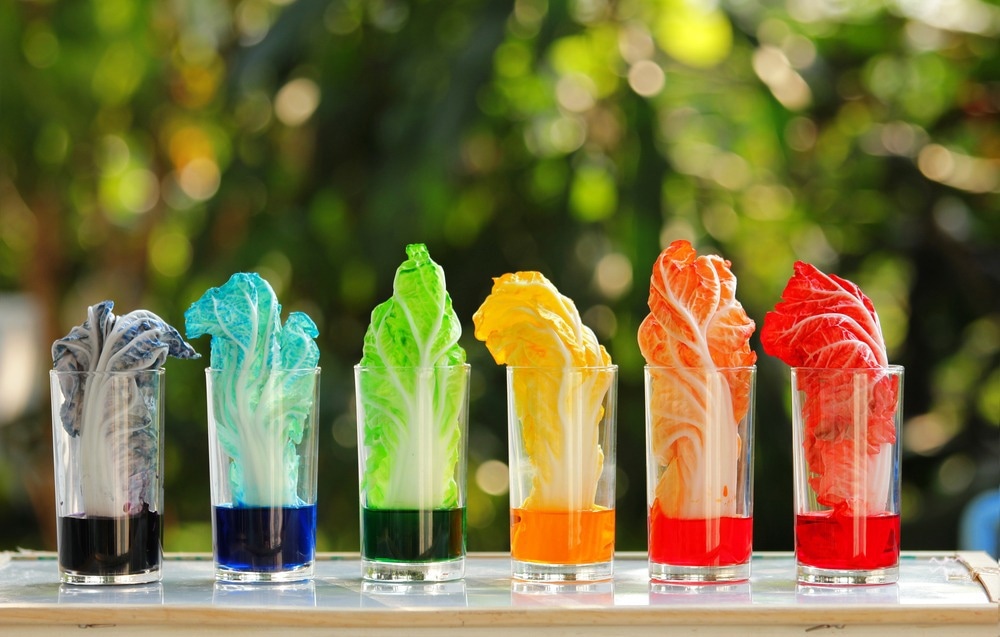Food dyes are important compounds used to enhance food's appearance and quality. However, long-term exposure to these substances may be harmful to human health. The synthesis of a zinc sulfide/copper oxide-carbon nanotube nanocomposite (ZnS/CuO-CNT) for ultrasound-assisted adsorptive extraction of acid food dyes from polluted water is the topic of a recent study published in the journal Scientific Reports.

Study: In-situ hydrothermal synthesis of CNT decorated by nano ZnS/CuO for simultaneous removal of acid food dyes from binary water samples. Image Credit: chuchiko17/Shutterstock.com
Food Dyes: Overview and Importance
Food dyes are attractive colorants used to color a wide range of food items, improving their visual appeal. They also provide the necessary framework for a dynamic food market. Therefore, dyes are regarded as a significant class of food additives.
Food dyes are categorized as natural or synthetic based on their manufacturing source. Natural dyes' instability and great sensitivity to light, heat, and pH severely limit their applicability in the food industry. On the other hand, synthetic dyes are created chemically and have a wide variety of uses in the dyeing, medical, biological, food, and other industries.
Harmful Impacts of Synthetic Food Dyes
Recently, researchers have disclosed that the substances used in synthetic dyes can be harmful to human health. Synthetic dyes, especially those having aromatic rings in their composition, can induce cellular defects, respiratory ailments, thyroid tumors, bronchitis, and allergies if used or absorbed via the skin on a regular basis.
Ponceau 4R (P4R) and Tartrazine (TA) are two anionic synthetic food colors used to make food items more appealing; they are also low cost, have high water absorption, and are highly stable.
Nonetheless, these harmful dyes have an aromatic and cytotoxic structure that, if taken in excess, may cause cancer, allergies, and neurological issues. Therefore, it is extremely important to develop a suitable method for the facile removal of these harmful dyes from food products.
Carbon Nanotube Nanocomposite for Removal of Food Dyes
Several removal techniques such as membrane procedures, coagulation, electrochemical techniques, ion exchange resins, microfiltration, flocculation, and reverse osmosis have traditionally been utilized to eliminate synthetic dyes from food products. However, these methods have several drawbacks, such as high costs, hazardous byproducts, and sludge production, limiting their practical applicability.
To overcome these constraints, the adsorption method is currently employed to treat various organic substances as well as heavy metals in polluted water due to its excellent characteristics such as cheap raw material prices, safety, ease of fabrication, and high effectiveness.
Because of the high surface area to volume ratio and adsorption ability of carbon nanotube nanocomposite, it is frequently employed as a suitable adsorbent to remove different pollutants. Furthermore, metal oxides/sulfides nanomaterials can be mixed with this carbon nanotube nanocomposite to improve its performance.
Highlights of the Current Study
A novel zinc sulfide/copper oxide-carbon nanotube nanocomposite (ZnS/CuO-CNT) was fabricated in this study using an in-situ hydrothermal technique. The as-fabricated carbon nanotube nanocomposite was subsequently employed as an effective adsorbent for the concurrent removal of harmful dyes P4R and TA from polluted water.
X-Ray diffraction (XRD), field emission scanning electron microscopy (FESEM), zeta potential (ZP) analysis, and Fourier transform infrared spectroscopy (FTIR) were used to investigate the structural properties of the produced carbon nanotube nanocomposite.
The adsorptive removal efficiency of the carbon nanotube nanocomposite was improved using the central composite design (CCD) approach based on response surface methodology (RSM). The adsorption kinetics, recyclability, thermodynamics, and effectiveness of the carbon nanotube nanocomposite were also examined.
Important Findings of the Research Work
The findings revealed that the carbon nanotube nanocomposite's removal efficiency improved at acidic pH and was proportional to sonication duration, temperature, and adsorbent dose. Increased dye concentration, on the other hand, reduced the removal efficiency of the carbon nanotube nanocomposite.
The optimal conditions for removal of food dyes using the fabricated carbon nanotube nanocomposite were an adsorbent dosage of 10 mg, sonication time of 12 minutes, pH value of 2.0, and temperature of 25°C.
After five adsorption-desorption cycles, the manufactured carbon nanotube nanocomposite could still remove 90 percent of hazardous food colors from the aqueous solution, according to the adsorbent reusability analysis.
Based on these findings, it is safe to suggest that the carbon nanotube nanocomposite fabricated in this study can not only find multiple applications in the food industry but also pave the way for developing novel food dye adsorbents.
Reference
Sharifpour, E. et al. (2022). In-situ hydrothermal synthesis of CNT decorated by nano ZnS/CuO for simultaneous removal of acid food dyes from binary water samples. Scientific Reports. Available at: https://www.nature.com/articles/s41598-022-16676-4
Disclaimer: The views expressed here are those of the author expressed in their private capacity and do not necessarily represent the views of AZoM.com Limited T/A AZoNetwork the owner and operator of this website. This disclaimer forms part of the Terms and conditions of use of this website.